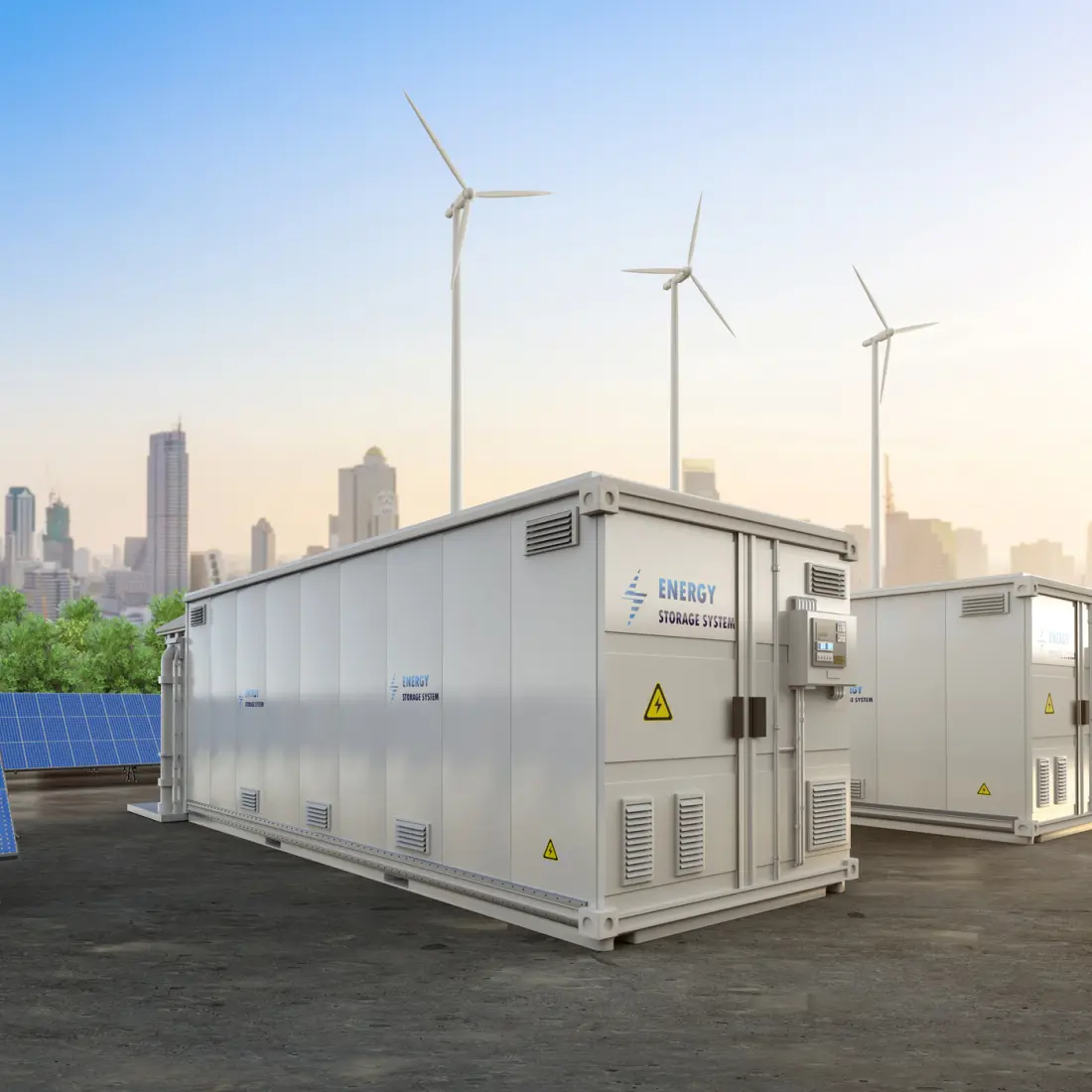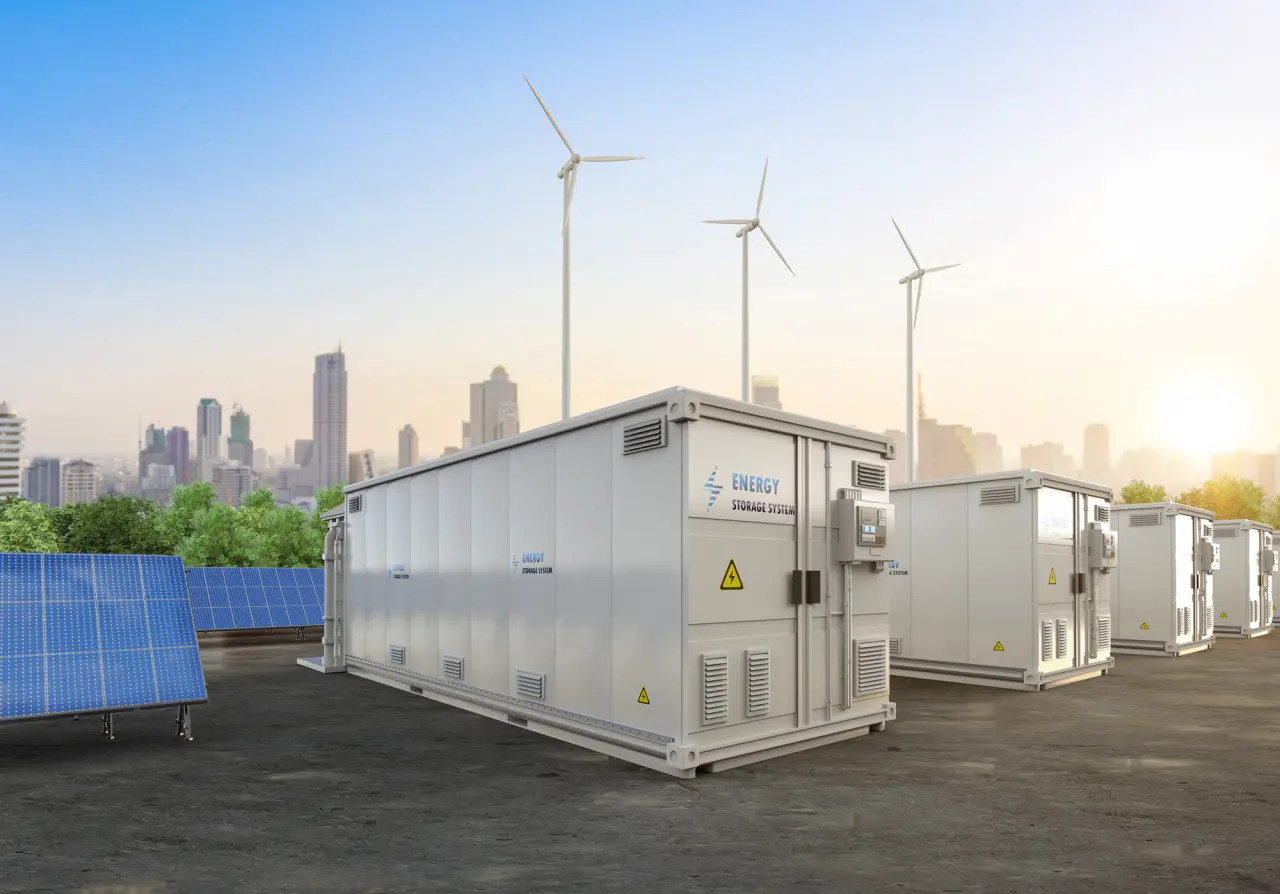Renewable energy and grid stability: modern infrastructure challenges and solutions


Grid stability ensures a continuous supply of electricity to homes and businesses. A reliable source of energy has always been necessary to sustain cities and towns and facilitate economic activity, but new challenges continue to arise. Aging infrastructure, an increase in the number of extreme weather events and cybersecurity issues affect the already strained electrical grid.
Energy suppliers, governments, businesses and homeowners are all looking for ways to mitigate today's energy supply risks and agree on the need for resilience to deal with today's challenges. Alongside infrastructure upgrades and increased efficiency, renewable energy is an increasingly important solution for creating greater energy resiliency.
Renewables like wind, solar, geothermal and biomass power are cost-competitive and cleaner than fossil fuels. Renewable energy offers stability and reliability over the long term because it relies on natural elements like sunshine instead of finite resources like coal or natural gas. Also, solar panels or turbines can sit closer to end users, limiting the amount of energy lost in transmission and lowering the chance of infrastructure damage affecting the power supply.
Here is a closer look at the role renewable energy can play in improving grid stability and the challenges increased reliance on clean energy could bring to utility providers and customers.
The basics of electrical grid stability
The power grid consists of a network of power plants where energy gets created, distribution facilities that break electricity down into lower voltages and power lines that carry electricity to end consumers.
Grid stability requires balancing the supply of energy with consumption. A stable grid transmits the same amount of electricity as its users consume, and it supplies this amount of power without major interruptions. Here is a look at the key components necessary for grid stability.
Supply and demand equilibrium occurs when the electricity produced and transmitted meets the needs of end users. This concept also involves stable pricing that helps maintain supply and demand equality.
Frequency and voltage control are necessary to ensure a consistent flow of energy through the grid. The grid needs the ability to adjust frequency and voltage to deal with changes in supply or demand. Failure to make adjustments could lead to systemwide disconnections and blackouts.
Grid inertia is caused by turbines or rotating generators in power plants. This equipment keeps spinning with inertia for some time even after losing propulsion, giving operators time to deal with system failures before total loss of power.
Renewable energy may complicate the current system for maintaining grid stability. For instance, renewable energy systems like solar arrays lack inertia, so the traditional system for balancing supply and demand may not function correctly and power can stop flowing immediately after a malfunction. The variable nature of solar or wind power makes this balancing act more complicated without proper management strategies.
Challenges with renewable energy and grid stability
Energy imbalances can occur based on fluctuations in, and differentials between, demand and power generation. However, renewables like solar can sometimes make these gaps larger. In the U.S., the largest grid imbalances occur in California and the Southwest, both of which rely more heavily on solar generation than other regions.
This is one of several challenges that utility-scale solar power producers have to contend with when adding renewable energy to the existing grid infrastructure.
Intermittent supply
Intermittency in renewable energy describes a power source that is not consistent or predictable. Wind turbines only produce power when the wind blows, and solar panels only convert rays to electricity during daylight hours. The output of both these power sources can vary depending on the weather.
Intermittent production is one of the biggest challenges of solar energy for homeowners, businesses and utility providers. Optimized design of utility-scale solar arrays can maximize solar panel efficiency and minimize fluctuations. However, even the most efficient layout and panel orientation won’t solve all intermittency issues.
While solar power does offer clean energy and lowers the daily output needs from other energy sources, utility providers may need to use other energy sources to meet non-daytime demand and provide backups should weather conditions cause lower solar or wind outputs.
Overload disturbances
While renewables may not produce any energy at some times, there are also scenarios where they overproduce such as on very sunny or windy days. Sudden spikes can cause issues controlling frequency and voltage in the system and exacerbate problems within the electrical infrastructure.
Transmission lines and substations in an aging grid system may not be able to handle the energy spikes. This can increase the risk of outages or require disconnecting energy generators altogether to avoid system-wide problems.
Balancing supply and demand
In some situations, peak renewable energy output aligns with energy needs. For example, buildings need energy to run air conditioners during hot summer days. However, homeowners also need electricity to power lights and appliances at night, and heating often requires a lot of electricity during the winter when solar output could be much lower.
In many regions, peak energy use is in the evening or early morning when solar panels are not producing power, so all power must come from other sources. However, these sources are not needed as much during the day when solar production peaks. A poorly planned grid can lead to chronic mismatches between supply and demand.
Not only does this oversupply or excessive demand affect grid reliability, but it can also cause electrical price fluctuations. Oversupply can lower prices during the day and high demand can cause higher peak rates after dark.
Solutions for grid stability with renewables
Solar, wind and other renewables require management approaches that account for intermittency and other complicating factors. Grid updates, energy storage solutions, smart grid technologies and government policies that account for renewables can help increase grid stability while embracing cleaner energy.
Updated planning and infrastructure
The electrical infrastructure in the United States is outdated and unable to withstand increasingly frequent severe weather and accommodate new additions like renewables. Local and regional regulators are reluctant to make upgrades that would involve major investments funded by rate increases that would be unpopular.
The solution could be to add grid-enhancing technologies (GETs) to help modernize the system and better integrate renewables. The U.S. Department of Energy is tapping private investors and using federal funds to speed up these upgrades.

Advanced storage systems
Advanced battery energy storage systems (BESS) can help deal with the issue of solar intermittency. Utility-scale batteries can charge during peak solar production and release energy as needed to meet electrical demands.
Issues like local regulation and standardizing batteries and control systems to work on different grid designs may slow down the deployment of energy storage solutions. However, prices for these large power storage systems are falling and BESS investments are increasing. McKinsey and Company estimates that the market for battery energy storage systems, currently worth $5 billion, will grow to $150 billion by 2030.
Smart grid technologies
Smart grid technologies can help modernize the current electrical infrastructure and reduce the strain on aging generators and transmission lines. In addition to batteries and other upgrades, these smart systems include Phasor Measurement Units (PMUs) that constantly assess grid stability and automated feeder switches that can route electrical transmission around damaged lines or substations.
The Internet of Things (IoT) is especially important for renewable energy integration. For example, small transistors, placed throughout the grid, can assess demand minute by minute and help adjust supply to meet needs without exceeding them. This technology can help distribute solar energy when the sun is shining and automatically shift production to other sources at night or when production dips to mitigate intermittency and overload risk.
Distributed energy production
Distributed renewable energy production is a cornerstone technology for sustainable energy systems. Distributed energy resources (DERs) are connected to the main grid, but are not centrally operated like a large power plant. Instead, DERs like roof-mounted solar panel arrays produce localized energy for a home or business and feed any excess electricity back into the grid.
Distributed energy sources can help grid stability by reducing the need for long-range electricity transmission, tempering demand spikes during peak periods and providing small backup sources of power throughout the grid. They also provide reliable electricity for owners if the main grid loses power due to transmission or substation problems.
Policy and research support
Grid stability and renewable energy expansion need support and coordination from policymakers in order to succeed. State and local governments need to coordinate region-wide projects in addition to updating the grid itself.
The combination of various forms of renewable energy, such as wind and hydroelectric power can reduce problems like intermittency and high demand. Authorities can also offer tax incentives meant to encourage property owners to add solar to their homes or businesses. People who take advantage can enjoy significant tax savings.
Meanwhile, government agencies like the Department of Energy are funding programs like the Grid Resilience and Innovation Partnerships (GRIPs). These efforts provide funding for innovations that could help modernize the grid.
While grid stability is a challenge for systems trying to incorporate renewable energy, smart changes and upgrades can allow the use of solar and wind while also creating a more resilient and well-managed power grid.